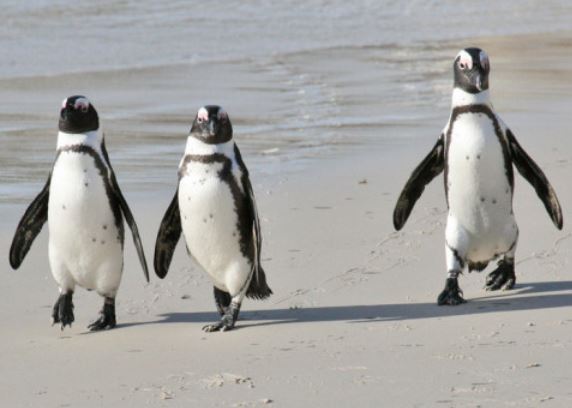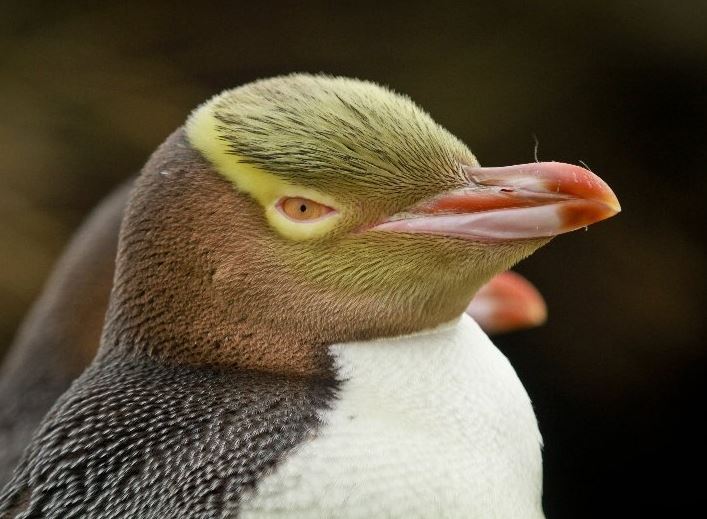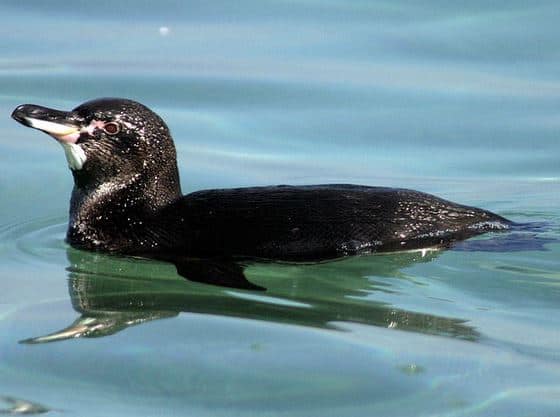Today, 25th April 2016, is World Penguin Day, when all of us worldwide should share our love for penguins, find more about them, and explore what others have to say about these iconic flightless birds. According to linguists, its name may have come from the Welsh ‘pen gwyn‘, which means ‘white head’.
Nobody – not even experts – are completely sure how many penguin species there are living in the world today. Most centres of excellence suggest between sixteen and nineteen species. Penguin World has 17 types listed on its website, but also emphasizes that exactly how many there are is ‘hard to say’.
 Experts say there are an estimated seventeen species of penguins in the world today. (Images: Left – Emperor penguin. Right – Little or Blue penguin)
Experts say there are an estimated seventeen species of penguins in the world today. (Images: Left – Emperor penguin. Right – Little or Blue penguin)
Regarding how many penguin types there are, and how sure we are about the ones already classified, Penguin World says:
“However, even one of those [types] is in doubt: the evidence indicates that the Royal penguin is really probably only a white-faced variant of the Macaroni penguin.”
“Yet, there might still be 17 species of penguins – or even more: genetic and other evidence is accumulating to suggest that the penguins with the long crests known as Rockhopper penguins probably comprise two, or even three, different species. Similarly, Gentoo penguins may well consist of more than one species.”
Each penguin species belongs to a larger grouping – a genus – consisting of closely-related species. There are currently six genera (plural of genus is genera) of penguins.
 No other bird breeds further south than Adelie Penguins. They are migratory – after breeding they do not return to their colonies until spring of the following year. (Image: Wikipedia)
No other bird breeds further south than Adelie Penguins. They are migratory – after breeding they do not return to their colonies until spring of the following year. (Image: Wikipedia)
25th April is an apt date for the Adelie Penguin, which officially begins its annual northward migration today.
World Penguin Day is not just a carnival, it is also a reminder that we need to protect them – in fact, without our help, the future survival status of several species does not look promising.
Penguins World says the following regarding the survival status of penguins worldwide:
“It is no secret that for almost all of the species of penguins out there, the numbers are less than they were just a few decades ago.”
“There are many reasons for this including hunting them for oil, taking their eggs, destroying their natural environment, the weather, and a lack of food supply. All of these factors though have left many of them vulnerable and others at risk for extinction.”
Penguins vulnerable to habitat change
It does not take much of a change in temperature or the shift in ice cover or icebergs in their habitat for Penguins to either thrive or struggle for survival.
Scientists from the University of New South Wales in Australia and the West Coast Penguin Trust in New Zealand reported in February that more than 150,000 penguins have starved to death since 2011 because they became landlocked by a huge iceberg.
By being landlocked, it meant they suddenly had to travel more than 37 miles (60 km) to get food. What was once an extensive area of open water near the shore became blocked by a colossal iceberg called B09B.
Iceberg B09B, a 1,119 square mile (2,900 square kilometer) monster, grounded Commonweal Bay after colliding with the Mertz Glacier Tongue.
Study leader, Dr. Kerry-Jayne Wilson, from the West Coast Penguin Trust, said:
“Over the past five years, the regional changes triggered by iceberg B09B have led to an order of magnitude decline in Adélie Penguin numbers and catastrophic breeding failure in comparison to the first counts undertaken by Mawson a century ago.”
Fortunately for the species, Adélie penguins’ survival status is of ‘Least Concern’ (IUCN) due to the large range, large population size and stable trend. Their main threats are oil pollution, climate change, habitat degradation and human disturbance.
 The African Penguin population declined significantly throughout the 20th Century. During the first ten years of the 21st Century, the decline accelerated. (Image: ourendangeredworld.com)
The African Penguin population declined significantly throughout the 20th Century. During the first ten years of the 21st Century, the decline accelerated. (Image: ourendangeredworld.com)
The African Penguin
The African Penguin (Spheniscus demersus), with breeding colonies in Namibia, and South Africa’s Western and Eastern Cape Provinces, has seen its survival status deteriorate to ‘Endangered’, because of a sustained and large decline in its population during the 20th Century.
After 1976, the African Penguin global population fell by thirteen percent per generation.
After the turn of the century, things got worse – in 2001 there were 57,000 breeding pairs compared to just 21,000 in 2009. In other words, during the first decade of this century its population plummeted by more than half.
The Global Penguin Society says regarding the African Penguin:
“Breeding population had decreased by > 50% in the three most recent generations and the decrease is continuing.”
“Their main threats are oil pollution, fishery mismanagement, habitat degradation and food availability changes potentially linked to climate change.”
 Possibly the most ancient of all penguins, the Yellow-Eyed Penguin is endangered. There are estimated to be just 4,000 in the wild today. It is considered one of the rarest of all penguins. (Image: penguinplace.co.nz)
Possibly the most ancient of all penguins, the Yellow-Eyed Penguin is endangered. There are estimated to be just 4,000 in the wild today. It is considered one of the rarest of all penguins. (Image: penguinplace.co.nz)
The Yellow-eyed Penguin
The Yellow-eyed Penguin (Megadyptes antipodes) is among the taller and heavier of penguin types. It has a yellow band of feathers across the nape and around its eyes.
It is found just in New Zealand – in the south-east coast of South Island, Steward Island (and adjacent island), the Campbell Islands and Auckland.
Regarding the Yellow-eyed Penguin’s survival status, the Global Penguin Society says:
“Endangered (EN)” (IUCN 2010) on the basis of being confined to a small range when breeding, its forest/scrub habitat decline in quality, and its populations undergone extreme fluctuations in numbers. Main threats are the habitat destruction and fragmentation, disturbance, and introduced predators.”
 The Galápagos penguin is the only penguin that lives north of the equator in the wild. The species is endangered. In the 1980s, its population declined by more than 70%. In 2004, there were only 1,500 individuals in the wild. However, there are signs that it is recovering. (Image: Wikipedia)
The Galápagos penguin is the only penguin that lives north of the equator in the wild. The species is endangered. In the 1980s, its population declined by more than 70%. In 2004, there were only 1,500 individuals in the wild. However, there are signs that it is recovering. (Image: Wikipedia)
The Galápagos penguin
The Galápagos penguin (Spheniscus mendiculus) is medium-sized, black all over with a white front-side, with semi-circular white swoops extended from behind the eyes and extended around all the way down to under the chin.
It is endemic to the Galápagos Islands, hence its name. Its habitat is the most northerly of all penguin species.
The Global Penguin Society says, regarding its survival status:
“‘Endangered’. Catastrophic declines in Galapagos penguin populations occurred mainy due to severe El Niño cycles and introduced predators. The increasing severity of El Niño cycles (believed to be caused by global warming) is the most serious threat to this species, because a particularly severe cycle could result in extinction of Galapagos penguins. Habitat degradation presumed egg and chick collection, potential competition and incidental mortality in fisheries, introduced mammalian predators, and oil pollution are other threats.”
Video – World Penguin Day
German car company Volkswagen and Dyer Island Conservation Trust talk about the status of the African Penguin, and efforts to save it.
